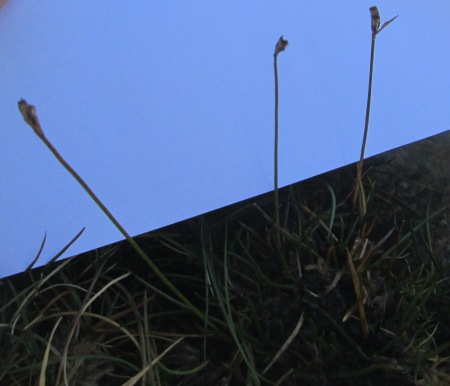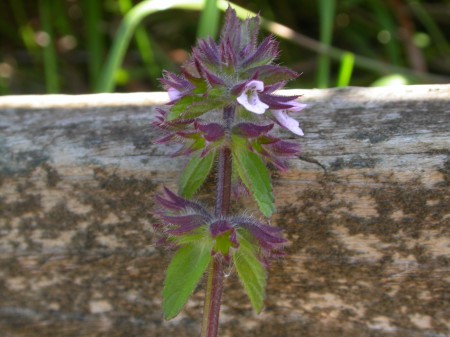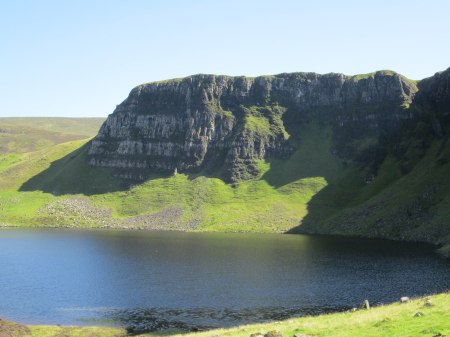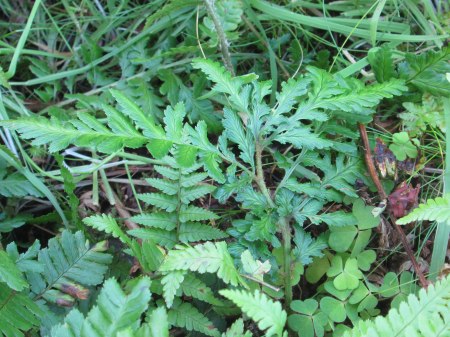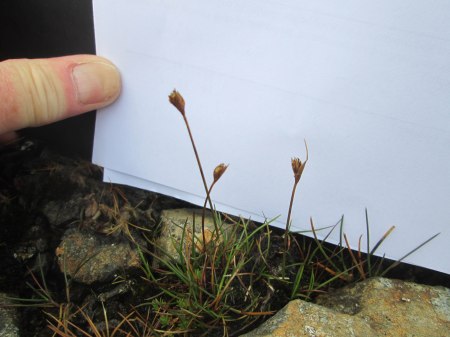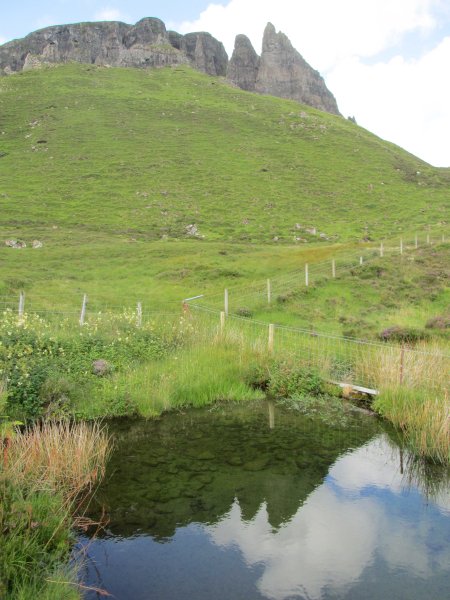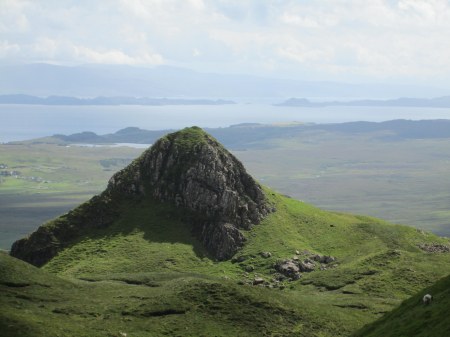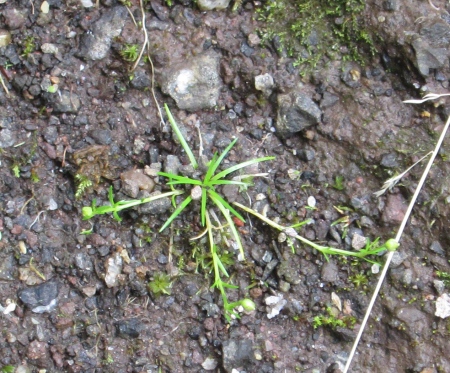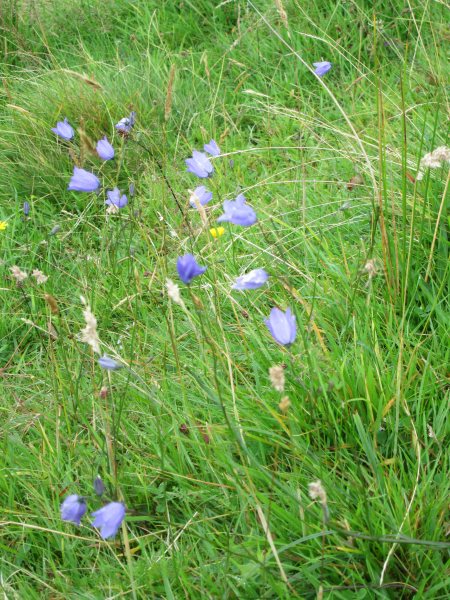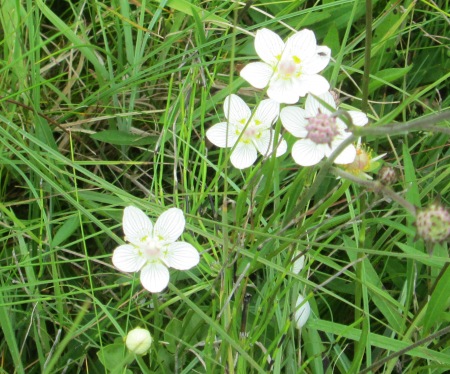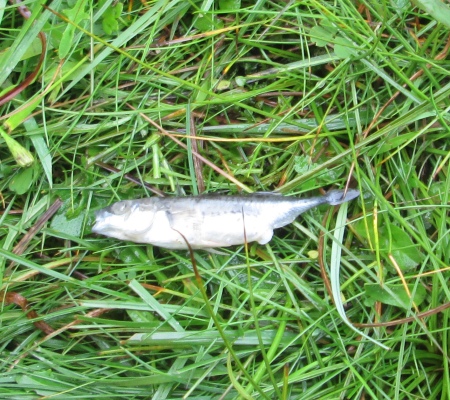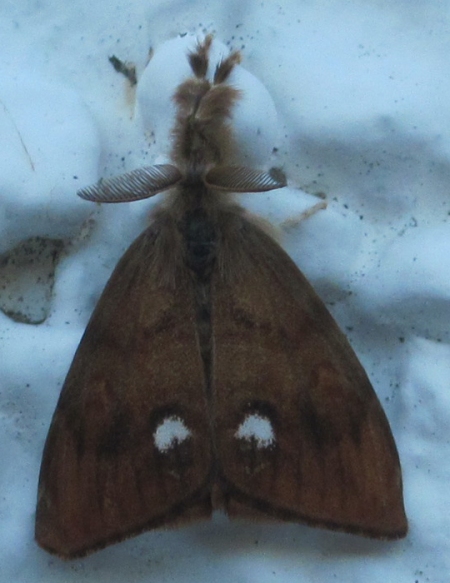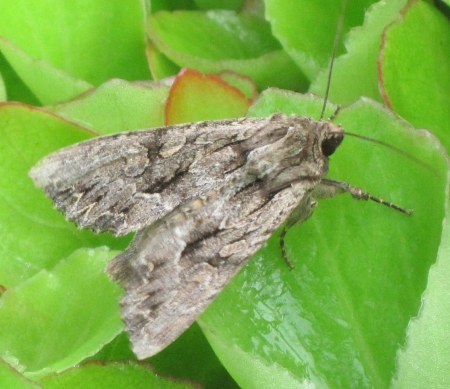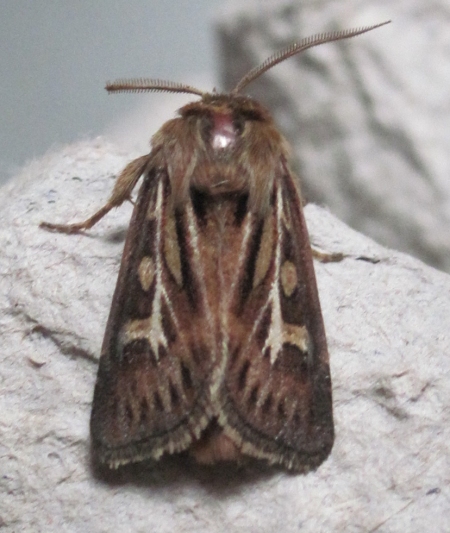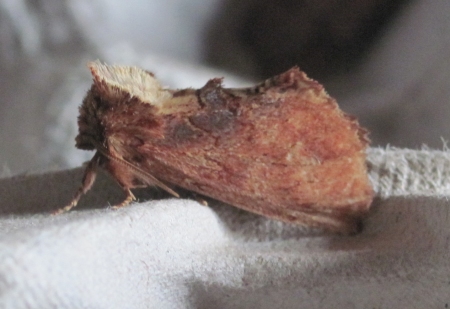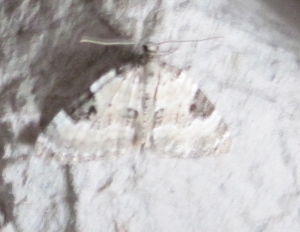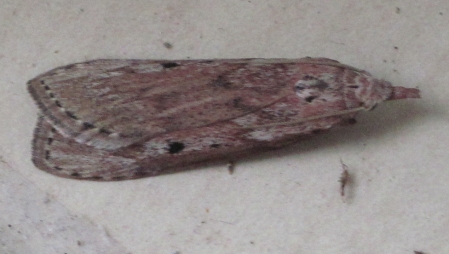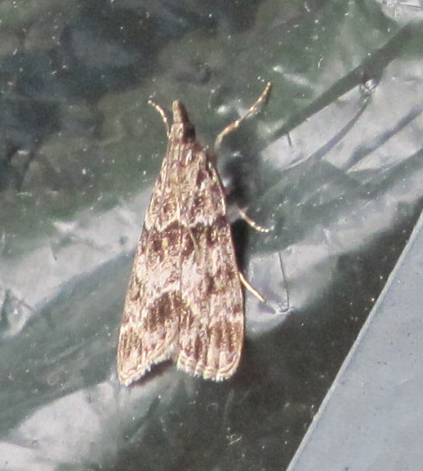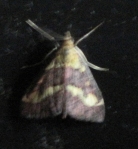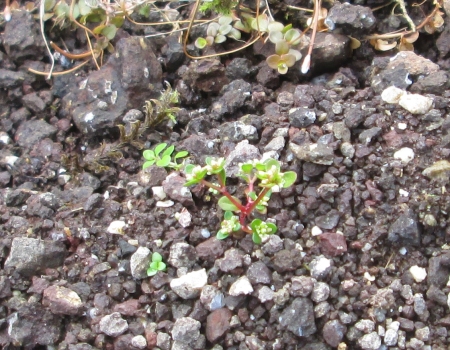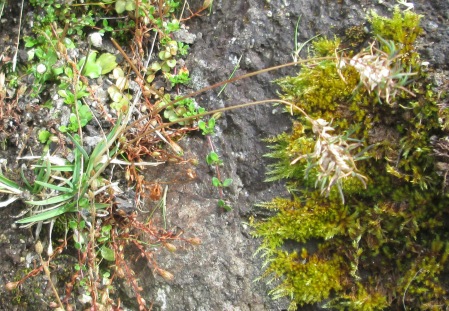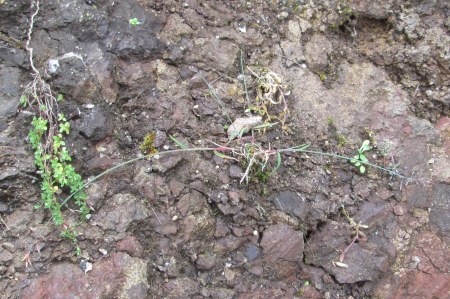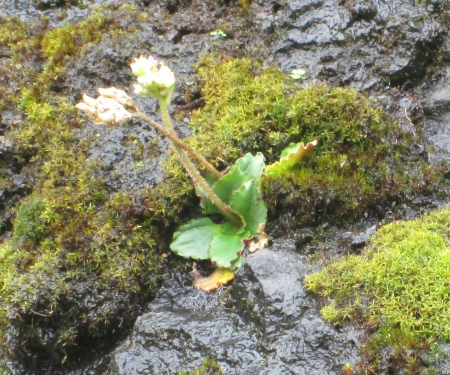I have spent several days at Loch Lonachan, surveying aquatic plants but in passing we spotted broom moth larvae and this insect which I wasn’t sure if it was a caddis fly or a moth. Keith suggests it might be the moth Rhigognostis senilella (Rock-cress Smudge) which has been recorded from VC104, though Loch Lonachan is a little way from the nearest Rock-cress whether it be Arabis alpina, A. hirsuta or Arabidopsis petraea, or indeed other known host plants. Later: Identified as a caddis fly of the genus Hydropsyche – see comments below.
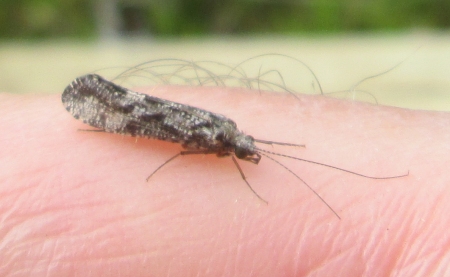
Hydropsyche sp.
The loch was full of what appear to be minnows, which is rather nice. There are Heather Flies everywhere at the moment with their long red legs dangling down as they fly.
Then, back to Trotternish before the weather breaks, to Càrn Liath in fact, to look at calcareous screes. Càrn Liath is impressive
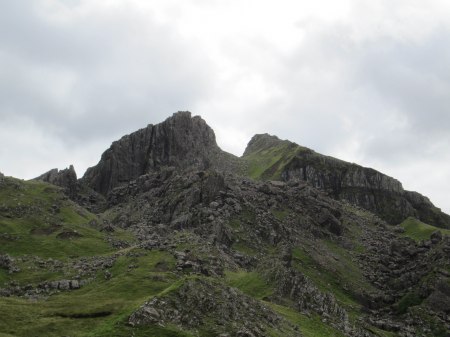
Càrn Liath
if less than 500m high, and the boulder scree to the north, equally so:
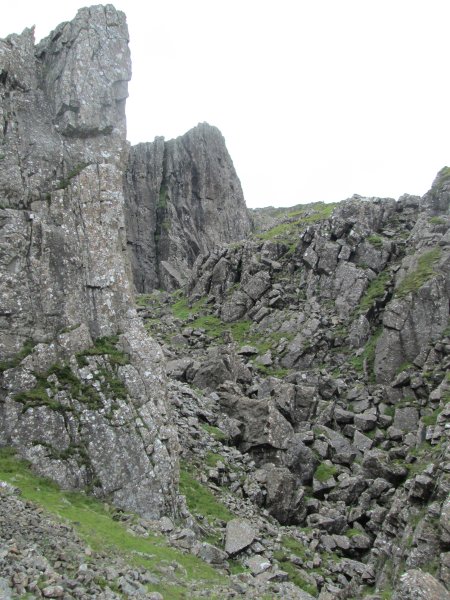
Càrn Liath
The lower parts of it have some trees – all Sorbus aucuparia (Rowan) giving an unusual landscape for Skye:
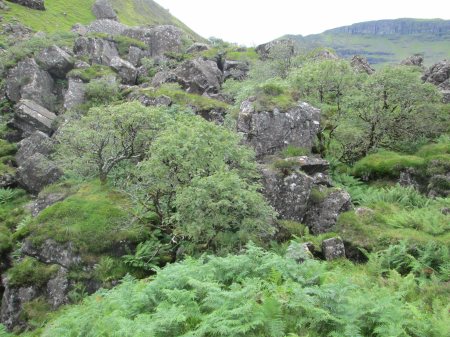
Lower scree
The rock is basalt, which is calcareous, so it is perhaps not surprising that the landscape is redolent of limestones areas – though the flora is not a limestone flora.
There was a curious Vaccinium that I think is just V. vitis-idaea (Cowberry) with unusually crenate leaves:
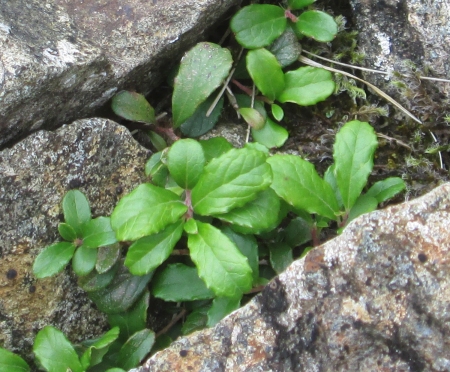
Vaccinium
I found the Cryptogramma crispa (Parsley Fern) where it has been known for over 50 years – and perhaps much longer, earlier records being a bit vague. This is a strangely rare plant on the Trotternish Ridge.
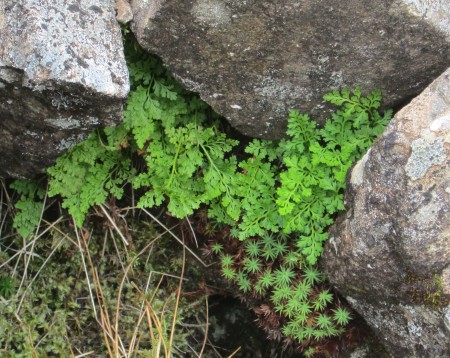
Cryptogramma crispa
On the way back towards the car this Common Hawker obligingly stayed still for a photo:
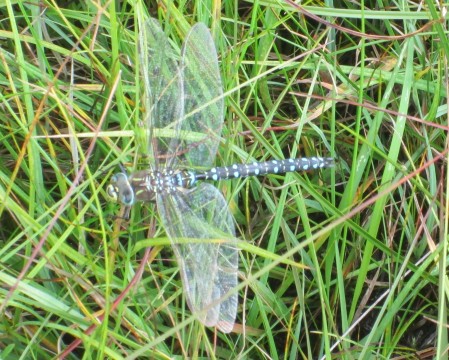
Aeshna juncea
Driving home through Portree I spotted a large and handsome specimen of Lythrum salicaria (Purple-loosestrife) by the roadside – a plant with rather few Skye records.
